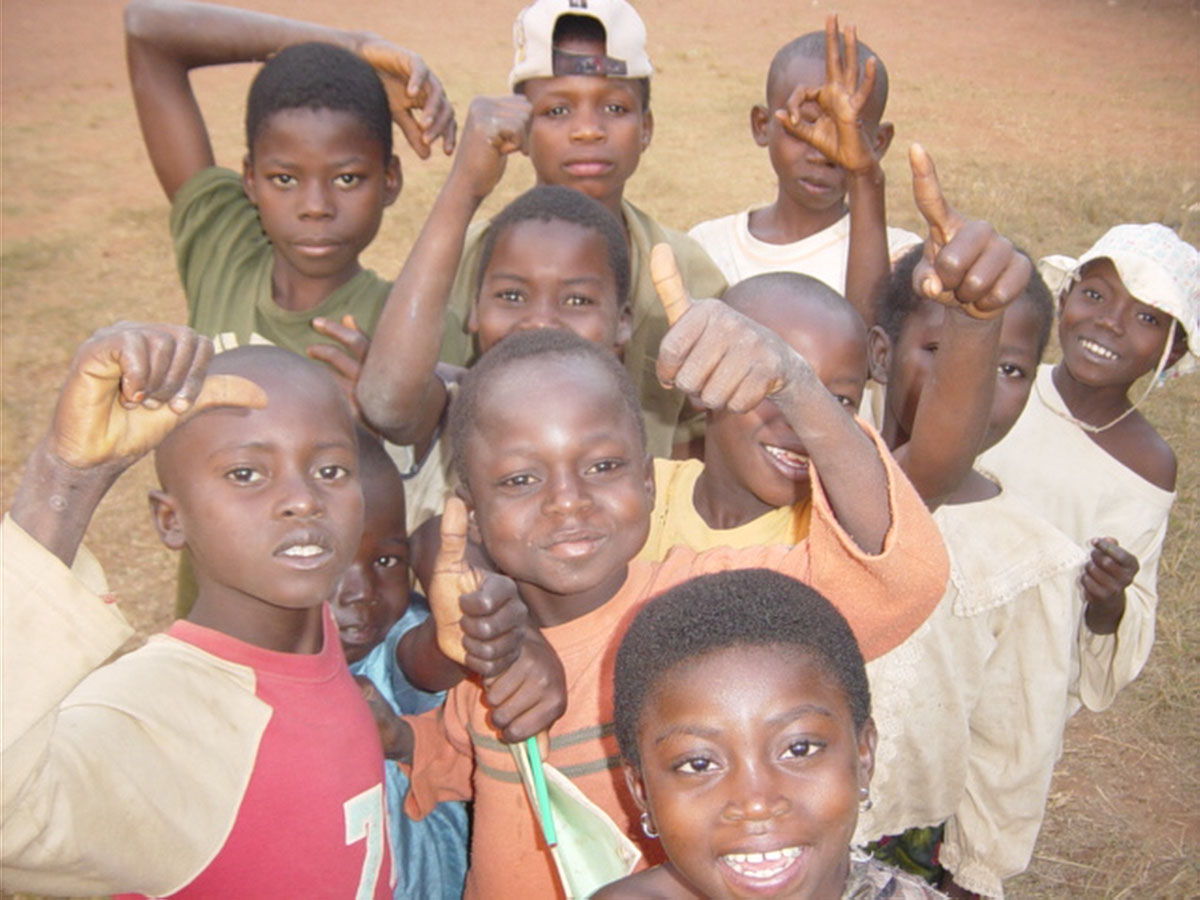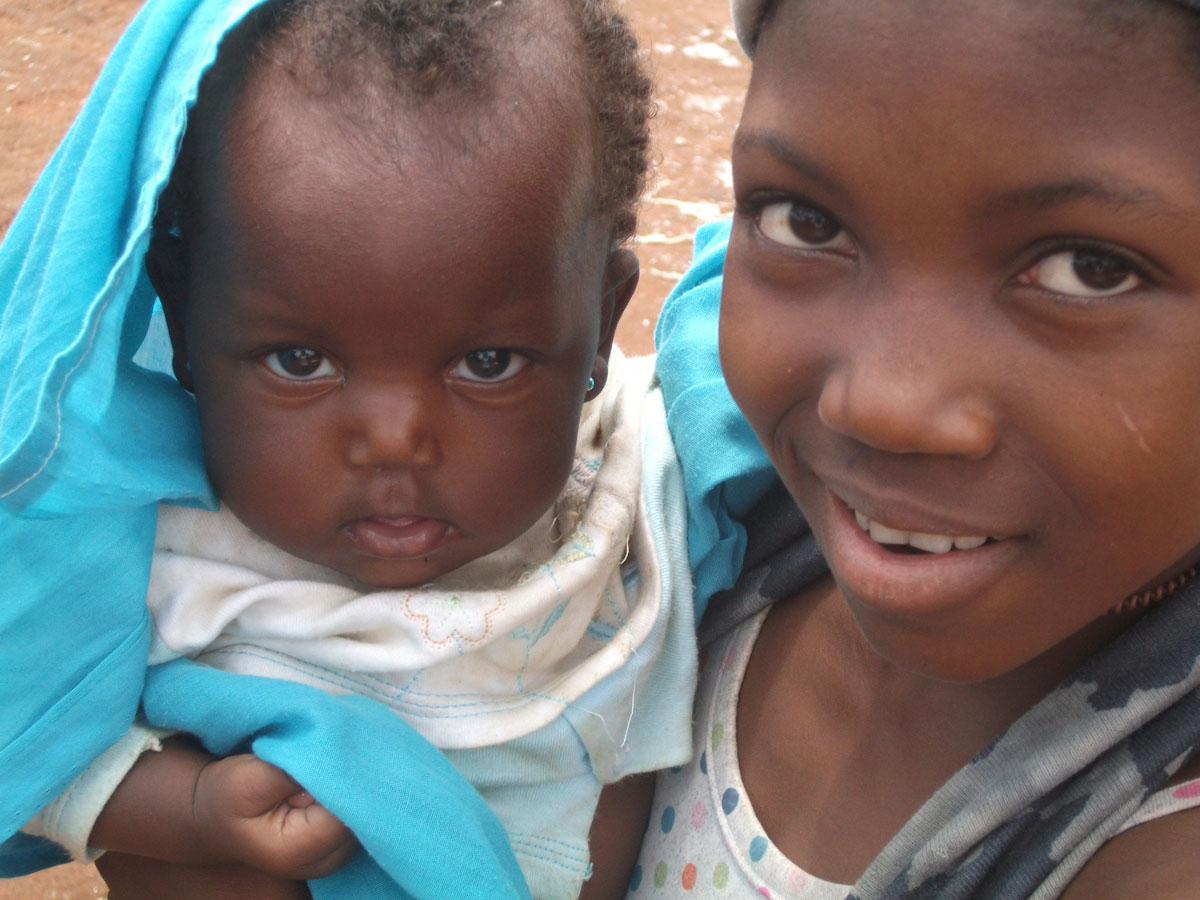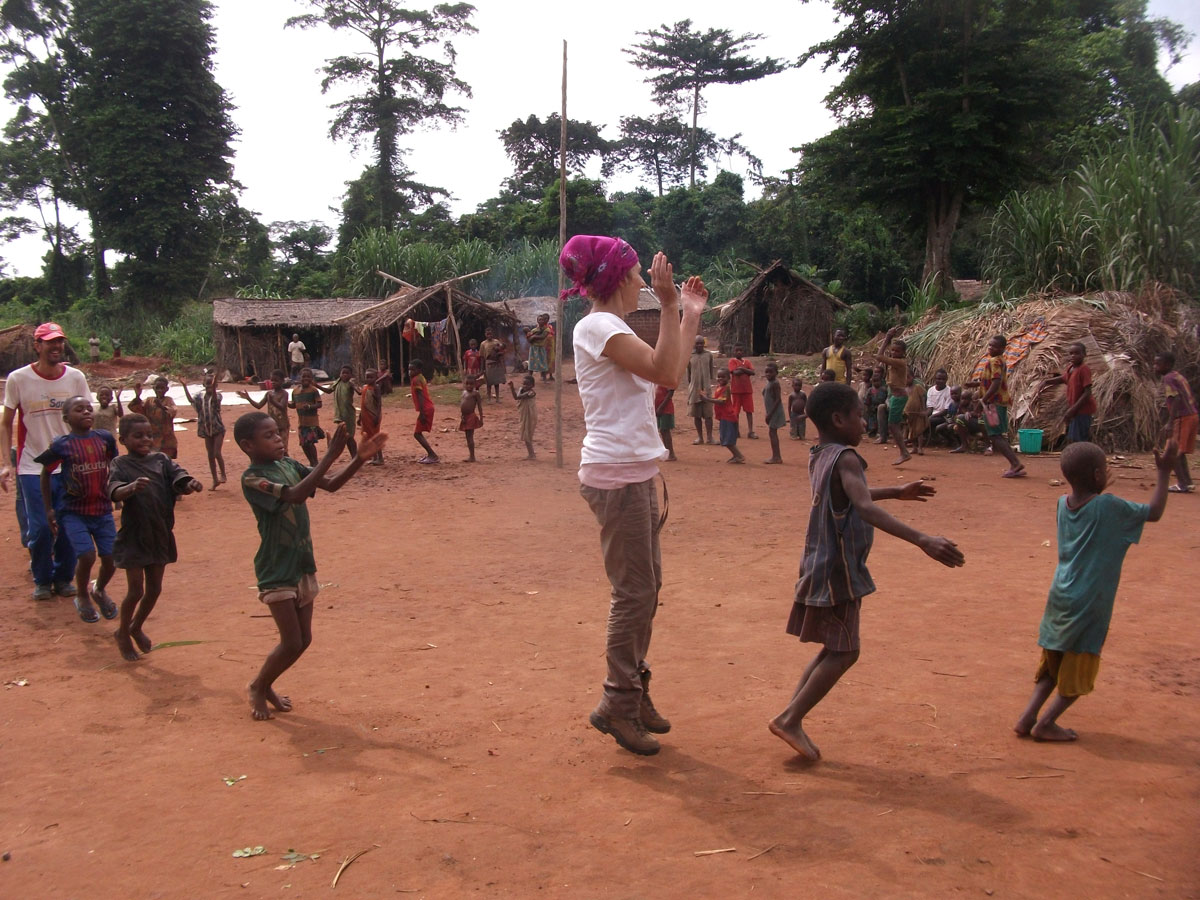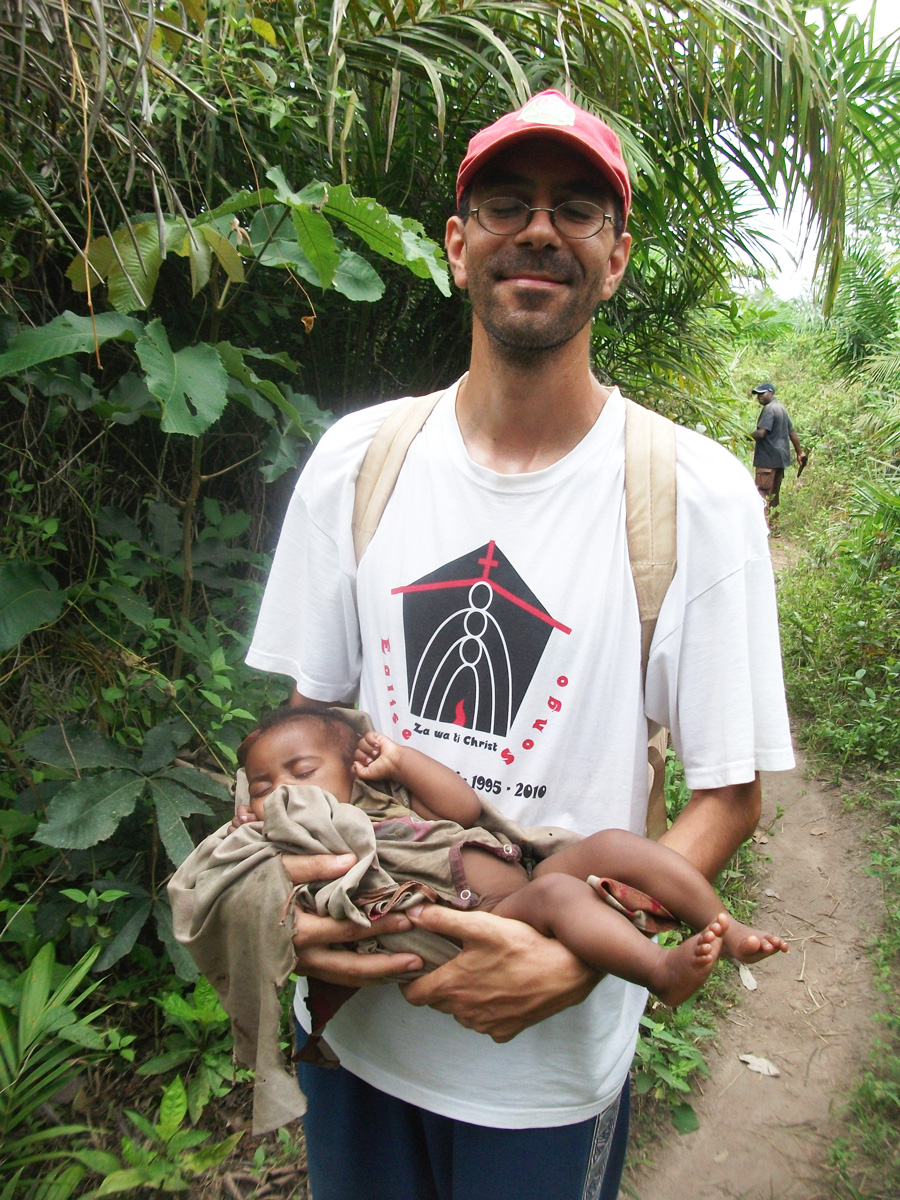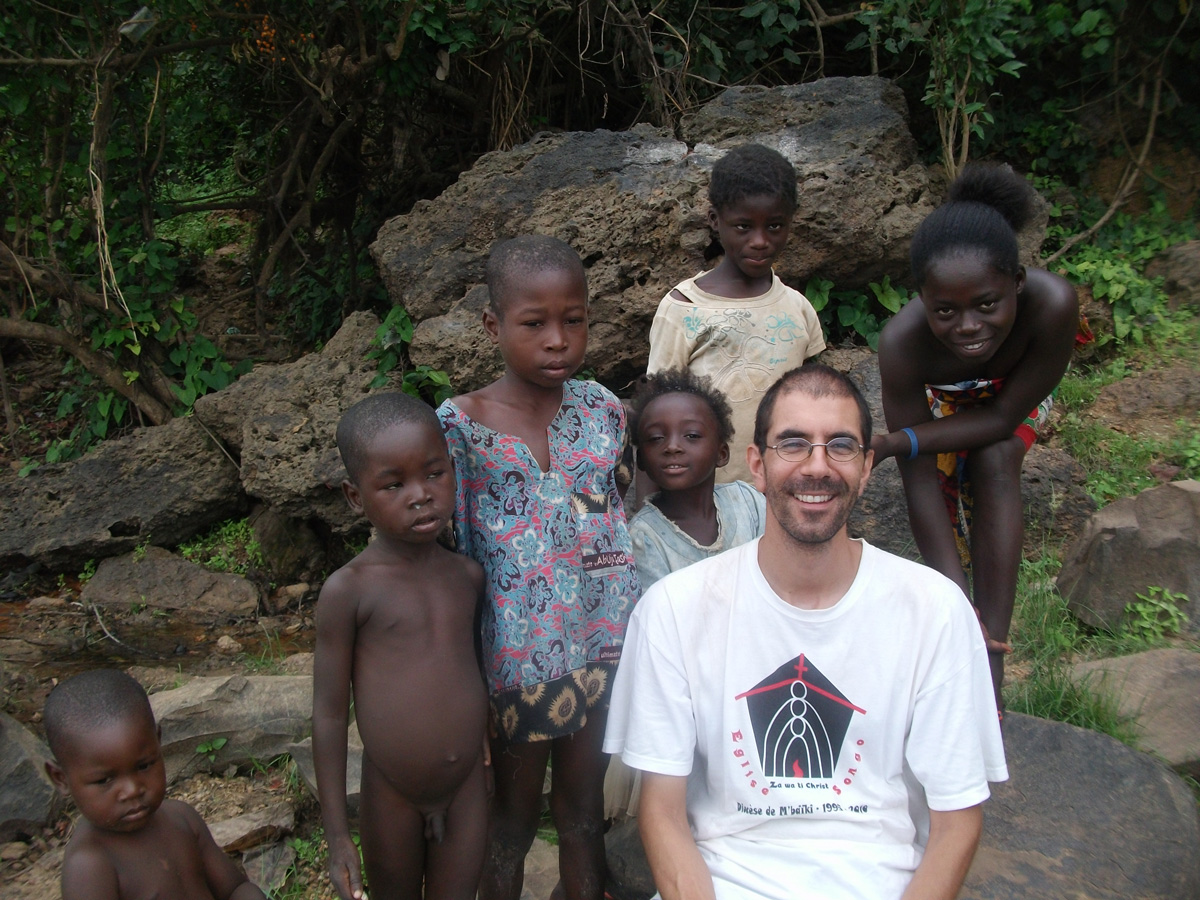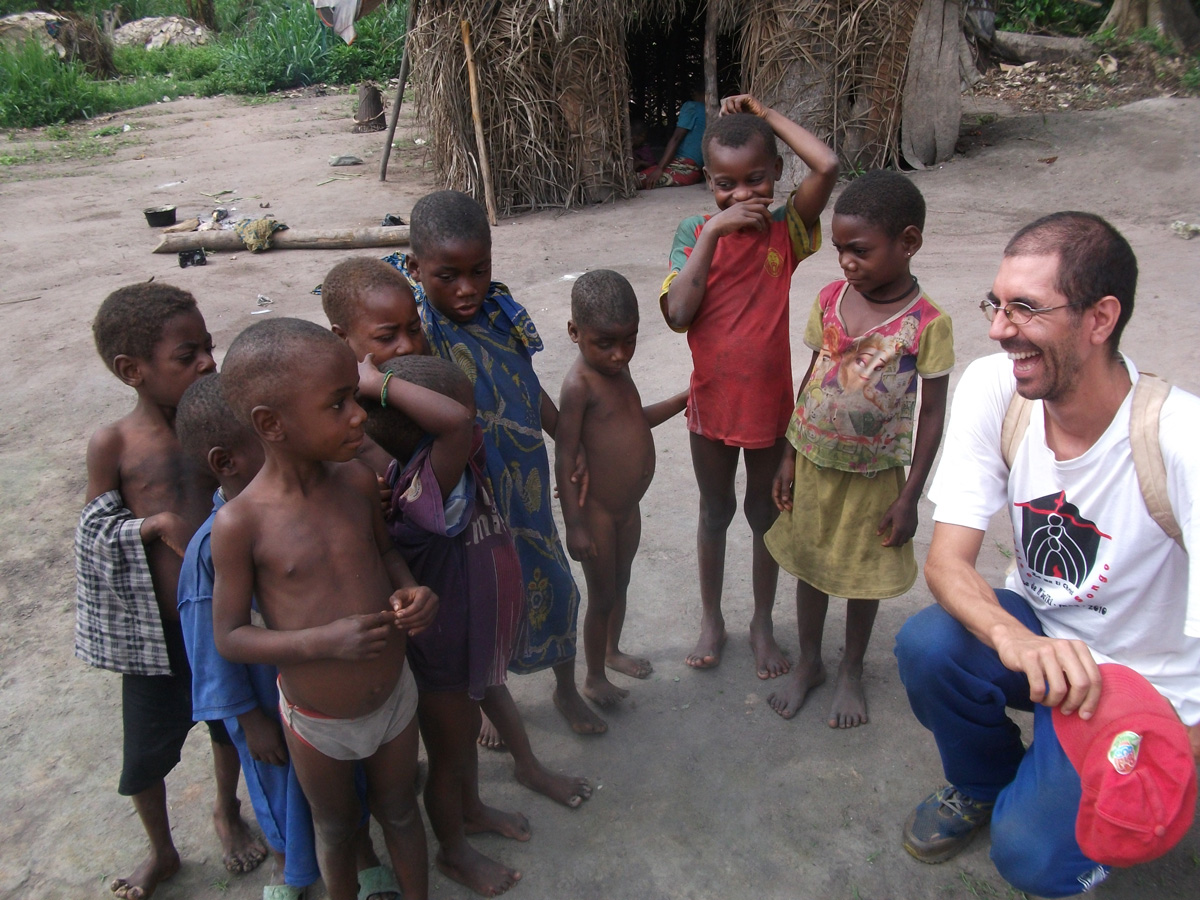Hi everyone!
I am André, a pygmy youngster, and I don’t know my age, perhaps between 7 and 9 years old, and I live in Ndobo, a camp in the forest of the Republic of Central Africa, near Mongoumba. My house, if you want to call it that, is like an igloo made of branches and dry leaves, with some boards as a bed. It has no bathroom, no kitchen, no TV or electricity, but fortunately it is close to a well a missionary dug some time ago, so I can drink and wash without having to walk for an hour through the forest.
Monday through Friday, together with my friends in the camp, I get up and go to school, walking about 4 km without shoes. Some days we get there a little late but, not having a watch, we do not know when it’s time to get up. Everything becomes more difficult during the rainy season, because the road turns into a swamp.
When we reach the parish of Mongoumba, we enter a room Cristina has prepared for us, where we all have a place with our name on it to wash up, put on our school uniform and, after having greeted Anna, Maria Augusta, Cristina and Simone, off we run to school. Often Maria Augusta comes to our class to help the teacher to “keep us under control,” since there are more than 50 of us, and to teach us French, even though we like to speak Sango, our language.
School ends around 12:30 noon, and we return to the St. Daniel Comboni room to change back into our tattered clothes and go to eat at the “DA TI NDOYE” (House of Charity/Love), where on any given day they give us rice and beans, manioc mush and fish, or Makongo (worms) and ngungia! We eat fast, then we go wait for Simone and Cristina at the payotte near the church to return together to the camp where we play ball, we color or watch movies until almost dark. Then Simone and Cristina say good-bye and remind us that tomorrow we need to be on time!
My day ends in the darkness of the camp, without lights and perhaps with some strange little creature trying to get inside, lulled to sleep by the Central African sky, with its tapestry of stars looking like precious jewels. Oh, I almost forgot… I do not exist! I am in the world… made of flesh and blood, I can run, jump, play… but I am not of the world!
In the CAR there are many other children like me! We are not only exploited, because the resources found in our land are exported to places we do not even know to produce, TV sets, phones, computers, weapons, bombs… but we are out of the world… I am excluded, without documents, without a birth certificate, without a public record… that is…
…IN THE WORLD but NOT OF THE WORLD! (John 17:15)
A warm good-bye
Kisses all around
A large hug
A small prayer
André with
Paul, Pierre, Marie, Albert Dimanche, Pierre, François Albert, Philippe, Guy, Marie, Terese, Marcel, Gabriel…
(with Anna, Maria Augusta, Cristina e Simone)




